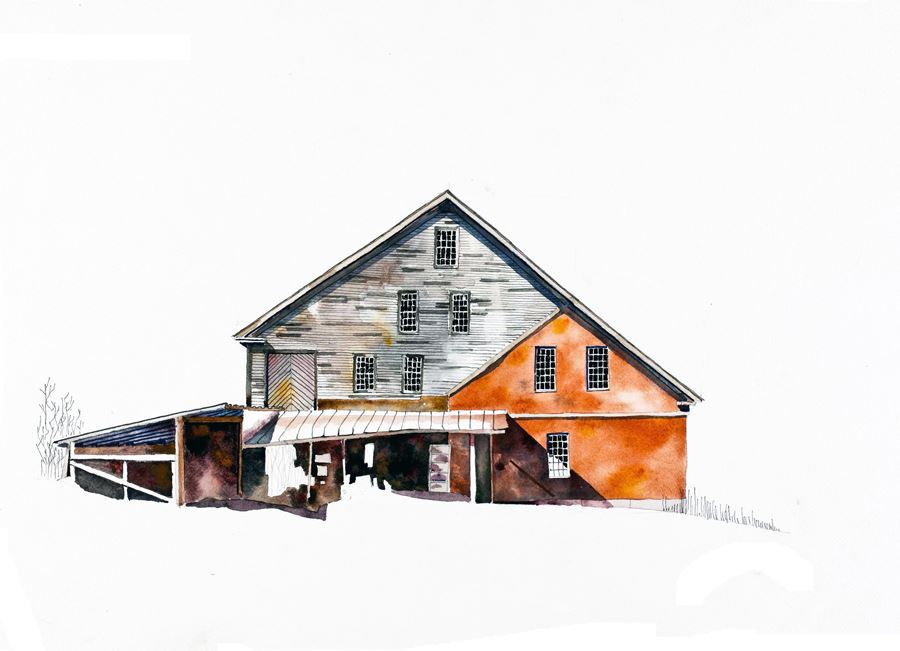by Tom Leytham
 HAYWARD & KIBBY MILL - TUNBRIDGE, VERMONT
HAYWARD & KIBBY MILL - TUNBRIDGE, VERMONT
In the early 19th century Tunbridge, Vermont was a one-stop shopping center. The town had a general store, livery stable, hotel, granary, grist mill, saw mill, and blacksmith shop as well as well as several covered bridges. The Spring Road part of the historic district has a 1½ story blacksmith cottage and residence, a covered bridge, grist and saw mill. The mill is the step child of the group, in the shadow of the Vermont cute village image.
But the mill is one of the most original examples of Vermont vernacular architecture –hiding in plain sight. The 1½ story grist mill was built in 1820 using locally sourced brick. In 1870, a saw mill was added by just building a new structure over the existing building – Pokeman style. The configuration was dictated by the sloping lot, in order to keep the belts vertical from the turbine through the building – with one turbine serving the grist and saw mills plus the wood shop. Restricted by the land and river, the bold addition does not overpower the modest original structure but ingeniously compliments it.
The interior is almost intact. Patterns for bull rakes hang on the wall of the woodshop. The band saw, table saw, planer, and lathe are ready for the leather drive belt to engage. The chutes, conveyors and mill stones are still hooked up and ready to make flour.
The 1911 turbines have been removes to ready the building for its next life – to generate electricity for homes in Tunbridge Village.

.jpg) WOOD SHOP
WOOD SHOP
https://www.tomleythamwatercolors.com/
for a video about Tom's work "Hiding in Plain Sight"